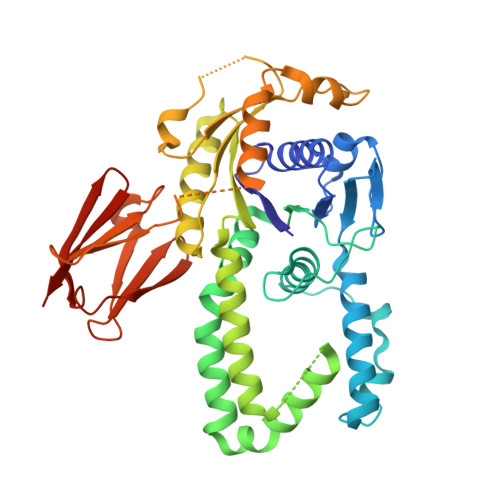Structures of Get3d reveal a distinct architecture associated with the emergence of photosynthesis.
Barlow, A.N., Manu, M.S., Saladi, S.M., Tarr, P.T., Yadav, Y., Thinn, A.M.M., Zhu, Y., Laganowsky, A.D., Clemons Jr., W.M., Ramasamy, S.(2023) J Biological Chem 299: 104752-104752
- PubMed: 37100288
- DOI: https://doi.org/10.1016/j.jbc.2023.104752
- Primary Citation of Related Structures:
8EGK, 8ELF - PubMed Abstract:
Homologs of the protein Get3 have been identified in all domains yet remain to be fully characterized. In the eukaryotic cytoplasm, Get3 delivers tail-anchored (TA) integral membrane proteins, defined by a single transmembrane helix at their C terminus, to the endoplasmic reticulum. While most eukaryotes have a single Get3 gene, plants are notable for having multiple Get3 paralogs. Get3d is conserved across land plants and photosynthetic bacteria and includes a distinctive C-terminal α-crystallin domain. After tracing the evolutionary origin of Get3d, we solve the Arabidopsis thaliana Get3d crystal structure, identify its localization to the chloroplast, and provide evidence for a role in TA protein binding. The structure is identical to that of a cyanobacterial Get3 homolog, which is further refined here. Distinct features of Get3d include an incomplete active site, a "closed" conformation in the apo-state, and a hydrophobic chamber. Both homologs have ATPase activity and are capable of binding TA proteins, supporting a potential role in TA protein targeting. Get3d is first found with the development of photosynthesis and conserved across 1.2 billion years into the chloroplasts of higher plants across the evolution of photosynthesis suggesting a role in the homeostasis of photosynthetic machinery.
- Division of Chemistry and Chemical Engineering, California Institute of Technology, Pasadena, California, USA.
Organizational Affiliation:



















